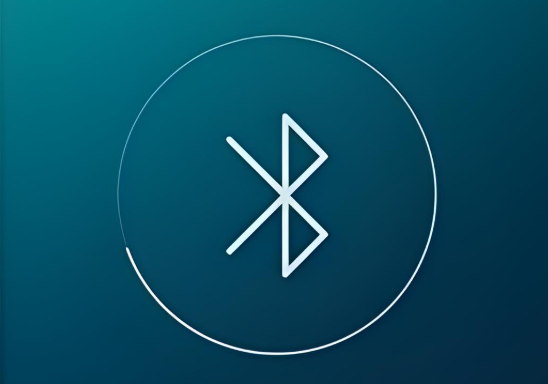As the core standard for short-range wireless communications, Bluetooth technology has undergone numerous iterations and has penetrated dozens of fields, including consumer electronics, industrial control, and healthcare. From the early days of Bluetooth 1.0, which offered a transmission rate of only 1 Mbps, to Bluetooth 3.0, which achieved 24 Mbps through Wi-Fi integration, and then to Bluetooth 4.0, which restructured the technology architecture with low power consumption as its core, each upgrade has been tailored to specific market needs.

Technical Architecture: Paradigms of Dual-Mode Parallelism and Tri-Mode Fusion
The core innovation of Bluetooth 3.0 lies in the introduction of "Generic Alternate MAC/PHY" (AMP) technology. By integrating the 802.11 wireless protocol layer, it allows devices to utilize the Wi-Fi radio for high-speed data transmission when needed. Its architecture utilizes a dual-mode design: Classic Bluetooth (BR/EDR) handles low-speed control command transmission, while the Wi-Fi module (typically 802.11n) handles high-speed data transmission. While this design overcomes the speed bottleneck of Bluetooth 2.0, it requires hardware to support both Bluetooth and Wi-Fi protocol stacks, increasing chip area by 40% and costs by 30%.
Bluetooth 4.0 adopts a "three-in-one" architecture, integrating classic Bluetooth (BR/EDR), high-speed Bluetooth (HS), and Bluetooth Low Energy (BLE) into a unified protocol stack. Its core breakthrough lies in BLE technology: by simplifying the radio layer design, data packet length is compressed to 8-27 bytes, and GFSK modulation is used, reducing device power consumption to the microwatt level in standby mode. Furthermore, Bluetooth 4.0 supports "master-slave role switching," allowing devices to dynamically adjust their operating modes and further optimize resource allocation.
Power Consumption Characteristics: An Order of Magnitude Leap from Milliwatts to Microwatts
Bluetooth 3.0's power consumption issues stem from its design logic: To maintain high-speed transmission, the protocol stack defaults to keeping both Bluetooth and Wi-Fi links active, resulting in static power consumption as high as 100mW. In continuous transmission scenarios, its power consumption is three times that of Bluetooth 2.0, enabling devices to operate continuously for only 2-3 hours. Even with dynamic power management technology, its minimum power consumption remains at around 10mW, which is insufficient to meet the long-lasting battery requirements of wearable devices and other applications.
Bluetooth 4.0 achieves a revolutionary reduction in power consumption through three key mechanisms:
Deep Sleep Mode: Devices automatically enter a low-power state during non-transmission periods. The separation of the host and controller allows the controller to independently wake the host, reducing power consumption by 90%;
Fast Connect/Disconnect: Connection establishment time is reduced from 6 seconds to 3 milliseconds, enabling immediate disconnection after a single data transfer, reducing power consumption from inefficient communication;
Adaptive Frequency Hopping: By optimizing the channel selection algorithm and reducing the retransmission rate, energy consumption per data transmission is reduced by 60%.
These improvements enable Bluetooth 4.0 devices to consume as little as 1μW in standby mode, extending their continuous operating life to several months.
Connection Efficiency: Response speeds are reduced from seconds to milliseconds.
Bluetooth 3.0 connection establishment proceeds through six phases: device discovery, service query, link establishment, security authentication, parameter negotiation, and data transfer. The entire process takes approximately 6 seconds. Its security mechanism uses 128-bit AES encryption, which ensures data security but increases the number of handshakes, resulting in higher connection latency. Furthermore, Bluetooth 3.0 only supports point-to-point connections and is limited to seven devices, making it difficult to meet the demands of multi-device collaboration.
Bluetooth 4.0 significantly improves connection efficiency through protocol stack optimizations:
Fast Discovery: Using the GATT (Generic Attribute Profile) architecture, devices can complete service discovery and connection establishment within 3 milliseconds;
Dynamic Channel Management: Supports automatic switching of 40 radio frequency channels, improving interference resistance by three times;
Mesh Networking: Using a "broadcast-scan" mode to achieve many-to-many connections, a single network can accommodate over 32,000 nodes.
These features give Bluetooth 4.0 significant advantages in scenarios such as industrial sensor networks and smart lighting.
Application Scenario: From high-speed transmission to positioning in the Internet of Everything
Bluetooth 3.0's high-speed characteristics make it particularly suitable for large file transfer scenarios, such as HD video streaming and high-resolution image synchronization. Its 24Mbps transmission rate meets the needs of real-time 1080P video transmission, but due to hardware cost and power consumption limitations, it is primarily used in professional equipment such as medical image transmission and direct connection to high-end printers. Due to limited market capacity, Bluetooth 3.0 device shipments have consistently accounted for less than 5%.
Bluetooth 4.0, with its low power consumption advantage, has opened up the consumer IoT market. Its BLE technology allows devices to operate for years on button batteries, making it the preferred connection solution for wearable devices such as smart bracelets, heart rate monitors, and environmental sensors. Furthermore, Bluetooth 4.0's mesh networking capabilities have driven the adoption of smart homes, allowing users to control hundreds of devices through a single gateway and integrate systems such as lighting, temperature control, and security. According to the Bluetooth SIG, BLE devices will account for over 70% of global Bluetooth device shipments in 2024, covering over 30 industries, including health monitoring, industrial automation, and agricultural IoT.
The difference between Bluetooth 3.0 and 4.0 is essentially a divergence in the paths of technological evolution: the former achieved a performance leap by adding Wi-Fi functionality, a form of "incremental innovation," while the latter pioneered a new paradigm of "ultra-low-power wireless connectivity" by restructuring the protocol stack and introducing low-power designs. This difference has become increasingly apparent in subsequent versions: Bluetooth 5.0 extends the BLE transmission range to 300 meters, and Bluetooth 6.0 achieves centimeter-level positioning through "channel sounding" technology. Meanwhile, the Bluetooth 3.0 technology has gradually been phased out by the market.